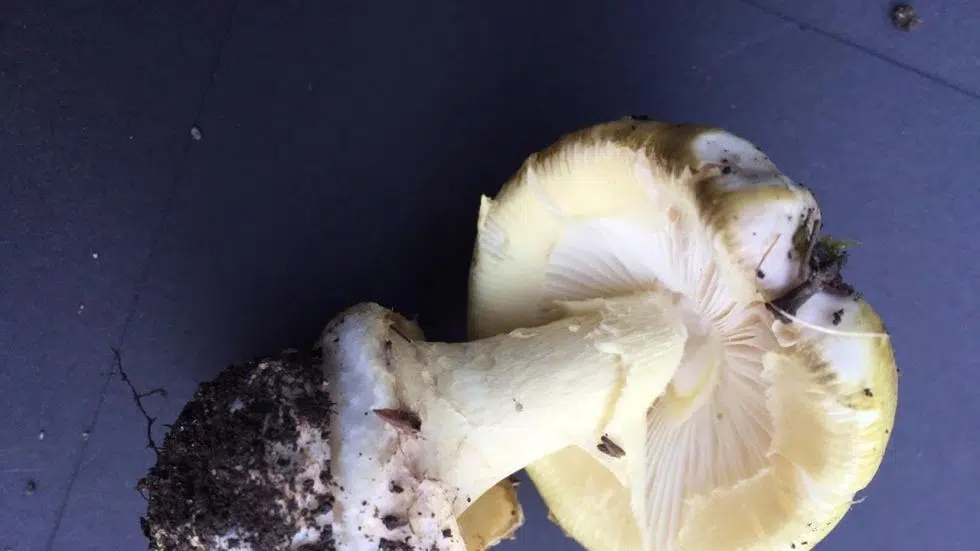
Researchers warn world’s deadliest mushroom could be found in Nanaimo
NANAIMO — Mushroom lovers in Nanaimo and across the mid-island are being warned not to forage in urban areas in case they accidentally pick the most dangerous fungi on the planet.
The BC Centre for Disease Control has issued an advisory about death cap mushrooms, which have been found across southern Vancouver Island and the mainland in great numbers in recent months.
Ministry of Environment research scientist Shannon Berch told NanaimoNewsNOW though there haven’t been any confirmed cases of the mushroom being found in the mid-island area, the fungi could theoretically already be here.
“In Nanaimo there’s correct boulevard trees growing which are more-or-less the same age as other trees in Victoria, Saanich and Vancouver who’ve been reported to host the death cap mushroom,” she said. “We think there’s some possibility it might be showing up in Nanaimo.”



